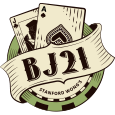Sports Betting Terms Other Than -110

Sharp Sports Betting is a tool for those interested in winning money at sports betting. The book explains the most common sports bets, what all the numbers mean, and the mathematics behind the numbers.
Let’s discuss some principles of sports betting. All sports bettors should learn the information below. All other kinds of casino advantage players, including blackjack players of all skill sets, which includes card counters, should also have a good working knowledge of these terms, as it is impossible to know when advantageous opportunities may present themselves.
Terms Other Than -110
The common way of expressing betting terms in the sportsbooks, whether they be located in Nevada or elsewhere, is how much money the customer must risk to win $100, or how much a customer wins on a bet of $100. That’s really two different systems, but it’s confusing only initially.
A Positive Number
If the terms of a bet are expressed as a positive number, the number will be 100 or more and will indicate the amount of your win on a $100 bet.
For example, if you make a bet at +145 and your bet wins, for every $100 you wager you will receive your $100 back plus an additional $145 that formerly was the sportsbook’s money.
If you bet $200 at +145 and your bet wins, that piece of paper you bought for $200 is now worth $490.
Here’s how to do the arithmetic: $200 times 1.45 is the amount of your win, $290. You also receive back the $200 you wagered. $290 + $200 equals $490.
An alternative way to do the arithmetic: Making a bet at +145 means you will receive back $245 for every $100 risked. Thus to get the price of a winning ticket, multiply the purchase price by 2.45. $200 times 2.45 is $490.
A Negative Number
If the terms of a bet are expressed as a negative number, the number will be farther from zero than -100 and will indicate the amount you must wager to attempt to win $100.
For example, if you make a bet at -120 and your bet wins, for every $120 you wager you will receive your $120 back plus an additional $100 of what had been the sportsbook’s money.
You might for example wager $300 at -120, and if your bet wins, the ticket you bought for $300 is now worth $550.
Here’s how to do the arithmetic: $300 divided by 1.20 is the amount of your win, $250. You also receive back the $300 that you wagered. $300 plus $250 is $550.
An easy way to handle the arithmetic is to always bet a multiple of the negative number. For example, if the terms of a bet are -120, and you want to risk around $500 on the game, bet some multiple of 120 that is close to $500. For example, you might bet $480 to try to win $400. Or you might bet $600 to try to win $500.
You do not have to force your bet to be an exact multiple of the betting number. You can bet an even $500 at -120, and if the bet wins you will receive $916.6667 rounded off, probably to $916.65 or $916.50 or $916.
Typical Money Line
A money line is a bet that a team will win straight up, no points added or subtracted (“point spread”).
Generally whenever a sportsbook offers a money line on a game or offers a proposition for betting, you can bet on either side. The book is hoping that people do in fact bet on both sides, so that the money from the loser can be used to pay the winner with some left over to go to the book for providing the service. The terms might be expressed as two negative numbers, or they might be expressed as a positive number and a negative number, or they might be expressed as a negative number and “EV.”
EV in a sportsbook means “even money,” not Expected Value. Sometimes the board will spell it out, “even,” instead of “EV.”
Two Negative Numbers
The two-negative-number situation occurs when each team is approximately equally likely to win. You might, for example, see one team or one side of the prop quoted as -105 while the other team or side is quoted as -115. Bettors who like the first team or side must risk $105 in an attempt to win $100. Bettors who favor the other team or side must risk $115 to try to win $100.
A Negative Number and a Positive Number
The negative number will always be farther from zero than the positive number; if that were not the case, the sportsbook would not have an edge over balanced action. You might see, for example, +210 and -270. Bettors who like the underdog risk $100 in an attempt to win $210. Bettors who like the favorite must risk $270 for every $100 they want to win.
A Negative Number and EV
EV means you risk a dollar to try to win a dollar. EV could also be expressed as -100 or +100; they would mean the same thing as EV but using them just isn’t conventional, though it is used at times.
You might see the terms of a prop expressed as a negative number on one side and EV on the other side; for example -130 and EV. Bettors who like the favorite would have to risk $130 for every $100 they want to win, and bettors who like the underdog would receive even money on their bets.
-------------------------------------------------
This is part of an occasional series of articles.
Excerpted with permission from Sharp Sports Betting by Stanford Wong, edited for this format.












Please log in or register to leave a comment